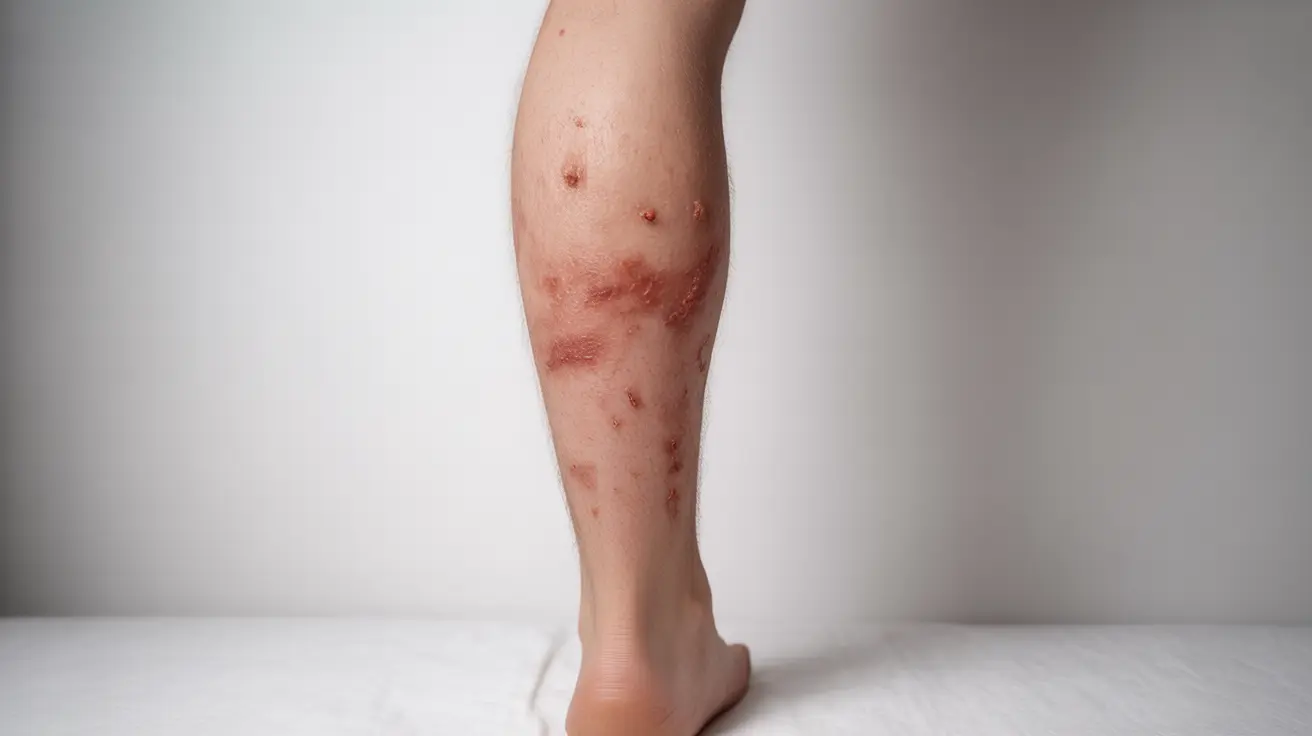Discovering red spots on your legs can be concerning, as they can stem from various causes ranging from minor skin irritations to more serious medical conditions. Understanding the potential causes and knowing when to seek medical attention is crucial for proper treatment and peace of mind.
This comprehensive guide will help you identify common causes of red spots on legs, explore treatment options, and understand when professional medical evaluation is necessary.
Common Causes of Red Spots on Legs
Contact Dermatitis and Allergic Reactions
Many red spots on legs result from skin contact with irritants or allergens. Common triggers include:
- Harsh soaps or detergents
- New skincare products
- Certain fabrics
- Plant substances (like poison ivy)
- Environmental allergens
Insect Bites and Stings
Insect-related spots typically appear as raised, itchy bumps that may cluster in specific areas. Common culprits include:
- Mosquitoes
- Fleas
- Bed bugs
- Chiggers
- Spider bites
Circulation-Related Causes
Poor circulation can lead to various types of red spots and discoloration on the legs. These may be associated with:
- Varicose veins
- Deep vein thrombosis
- Peripheral artery disease
- Venous stasis dermatitis
Treatment Options for Red Spots
Home Remedies
Many cases of red spots can be managed with simple home treatments:
- Cool compresses
- Over-the-counter antihistamines
- Calamine lotion
- Hydrocortisone cream
- Regular moisturizing
Medical Treatments
More persistent or severe cases may require professional medical intervention, such as:
- Prescription antihistamines
- Topical steroids
- Antibiotics (if infection is present)
- Specialized treatments for underlying conditions
Prevention Strategies
Taking proactive steps can help prevent red spots from appearing on your legs:
- Maintain good skin hygiene
- Use gentle, fragrance-free products
- Wear protective clothing when outdoors
- Keep skin moisturized
- Address circulation issues through regular exercise
- Avoid known allergens and irritants
Warning Signs and When to Seek Help
Certain symptoms warrant immediate medical attention:
- Severe pain or swelling
- Spreading redness or warmth
- Fever or chills
- Blistering or open sores
- Signs of infection
- Spots that don't improve with home treatment
Frequently Asked Questions
What are the most common causes of red spots on legs and how can I identify them?
The most common causes include insect bites, contact dermatitis, allergic reactions, and circulation problems. Insect bites typically appear as raised, itchy bumps, while allergic reactions often cause flat, red patches. Circulation-related spots may appear as clusters of tiny red dots or larger patches.
When should I see a doctor about red spots on my legs?
Seek medical attention if you experience severe pain, spreading redness, fever, signs of infection, or if the spots don't improve with home treatment. Also consult a healthcare provider if the spots are accompanied by other symptoms or affect your daily activities.
How can I treat itchy red spots on my legs caused by insect bites or allergies?
For insect bites and allergies, use over-the-counter antihistamines, calamine lotion, or hydrocortisone cream. Apply cool compresses to reduce itching and inflammation. Keep the area clean and avoid scratching to prevent infection.
Can poor circulation or underlying health conditions cause red spots on the legs?
Yes, poor circulation can cause red spots, particularly in the form of petechiae (tiny red dots) or larger patches. Underlying conditions like diabetes, autoimmune disorders, or vascular problems can also manifest as red spots on the legs.
What steps can I take to prevent red spots on my legs from recurring?
Prevent recurrence by maintaining good skin hygiene, using gentle skincare products, wearing protective clothing, staying hydrated, and exercising regularly to promote circulation. Identify and avoid known triggers or allergens that may cause spots to develop.




